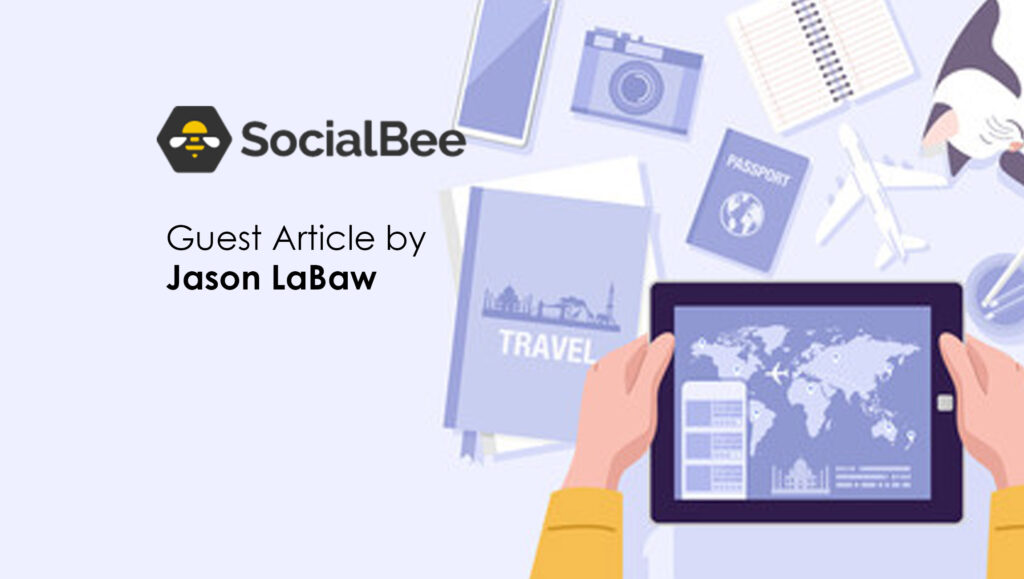Digital marketing might only have been around for as long as the internet, but marketing in various forms has arguably existed for as long as humans could trade, barter, and sell. Posters and billboards first appeared over 150 years ago, as businesses tried to showcase their products, but fast forward to 2022, and marketing methods have been somewhat updated for the digital highway.
For the travel industry, this means employing data insights to better understand traveler demands and seasonal trends—and empowering businesses to make more strategic decisions as a result.
Google is now synonymous with ‘the internet’ for many people and is used for roughly 9 billion searches per day. The search engine tool is simultaneously a marketer’s biggest friend and wiliest foe when it comes to understanding and reaching a potential customer. Google might be the most popular search engine for consumers, but this makes its coveted top spot a nightmare hike for any marketer or business to reach.
However, humans have historically used tools to their advantage, and Google is no exception. Savvy marketers can utilize the search engine by combining its analytical functions with their own ability to interpret local and global contexts. This enables them to maximize their ability to reach customers at every stage of their digital consumer journey.
How so? Let’s explore three simple but valuable data-driven steps to customize offers and add value based on travelers’ interests and needs.
Step 1: Interpret local and global contexts
Media monitoring is something most digital marketers naturally do, whether that involves looking in on news headlines of the day, browsing social media, or even checking out the latest blockbusters. Using your media consumption is the best way to look out for both local and global trends that could inform your marketing tactics.
For instance, maybe you’ve become enamored with the now globally-produced reality television show Love Island. For Brits in the UK, the popularity of the 2022 season saw a 600% increase in the search for “cheap holidays to Mallorca” where the show is based. Similarly, the popularity of blockbusters such as Hawaiian-filmed Jurassic Park and Pirates of the Caribbean equally sparked an increase in the number of adventure tours searched for in their respective destinations.
Those in the travel and tourism industry are usually quick to build on the momentum of such popular releases. The most astute marketers are the ones that leverage this heightened attention by developing content strategies optimized to appear in these trending searches.
Step 2: Marketing for every phase of the buying cycle
A potential traveler/customer’s digital search can be broken down into three phases of a buying cycle:
- Informational search: When the customer is conducting research e.g. “best area of hiking in New Zealand” or “best mountain biking trails near Auckland”. This is where content blogs can add the most value for businesses as they provide non-promotional opportunities that generate awareness without feeling like too much of a hard sell.
- Evaluation of alternatives: Potential travelers are now ready to compare the options they’ve found. This could involve searching for reviews that include a customer story on your own website or ratings on independent sites such as Tripadvisor.
- Purchase point: This is the most competitive point of the buying cycle and can often be a waste of effort if a traveler is already convinced by their previous cyber investigations. It could include price-related searches for package deals or cheapest options, so designing your online booking and point-of-sale for the most seamless user experience (UX) can help lock in a customer at this decision-making moment.
Knowing your audience by asking: Who are they? What drives them? What are their fears? And what are their buying patterns and preferences? Is vital for understanding your target customer and identifying how to reach them at each phase of the cycle.
Marketing Technology News: MarTech Interview With Rachel Kavanagh, CMO at Siren
Step 3: Predict and target keywords
Digital tools, such as Google Trends and Buzzsumo, are easy-to-use analysis platforms that can help upgrade your business strategizing and open up the online world behind the scenes. While Google trends allow you to see how often people are searching a term, where those people are located, and view search term data comparatively, Buzzsumo reveals the amount of written content on a particular topic and helps you connect with potential content collaborators.
For instance, Google trends demonstrate a recurring peak of interest in the search “haunted house tour” throughout October year. In addition, with the comparative search option, you could see whether “haunted house” vs. “murder mystery” tours were more popular in your area. And then position your marketing materials accordingly with search engine optimization (SEO) for website copy.
Likewise, if you’re coming up with new ways to add value for your customers, entering the experience economy is the perfect place to start. Suppose you’re looking to charge premium prices. You’ll need to provide premium experiences, and a self-guided augmented reality (AR) tour that relates to your product or business is an innovative way to spark the wanderlust in a potential customer. In this case, having the chance to compare search interest in “self-guided tours” vs. “scavenger hunts” and use this data insight to target your marketing could be the make or break of any strategy.
Marketing Technology News: Data Privacy Implications for Online Advertisers
With your keywords identified, sites like Buzzsumo can connect you to network with influencers, creators, and journalists that can help expand the reach of your content.
Data on our digital activities is one of the most valuable assets of our technological age. Every time a potential traveler searches for information, they’re letting businesses and product marketers know what they want. These data insights can then be used to develop and further hone digital content strategies to best capture these traveler demands.


















